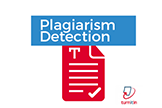IDENTIFIKASI KEBERADAAN ORGANIC SHALE BERDASARKAN ANALISIS DATA MAGNETOTELLURIK PADA CEKUNGAN KUTAI
Abstract
Kebutuhan akan gas dan minyak bumi dunia terus meningkat seiring berjalannya waktu. Salah satu kebijakan pemerintah Indonesia adalah meningkatkan eksplorasi dan produksi cadangan minyak dan gas bumi non-konvensional seperti shale oil dan shale gas. Metode Magnetotelurik (MT) digunakan dalam penelitian ini dikarenakan keterbatasan penetrasi kedalaman oleh Metode Seismik yang disebabkan oleh batugamping yang sangat tebal sebagai low velocity layer sehingga sulit bagi gelombang mekanik untuk menembus lapisan tersebut. Penelitian mencari bagaimana cara melakukan pengolahan dan interpretasi data MT menggunakan software SSMT2000, MTEditor dan WINGLINK pada daerah telitian untuk menghasilkan model organic shale yang baik. Proses pematangan thermal organic content yang terkandung dalam shale mulai terjadi pada kedalaman 2500 hingga 9500 dan persebarannya relatif kearah barat daya – timur laut. Pada kedalaman 10500 belum dapat diinterpretasikan sebagai organic shale dikarenakan proses crosspower hanya sampai dengan frekuensi 0,01 Hz.
Kata Kunci: Organic shale, magnetotellutic, resistivitas.
The world's gas and petroleum needs continue to increase over time. One of the Indonesian government's policies is to increase sales and non-conventional petroleum such as shale oil and shale gas. Magnetoteluric (MT) method used in this research is as the penetration limit of seismic measurement caused by such a low velocity layer. This research aims to find how to do the processing and interpretation of MT data using SSMT2000, MTEditor and WINGLINK software on the research area to produce a good organic shale model. The process of maturation of the thermal organic content contained in the shale begins to occur at depths of 2500 to 9500 and its distribution towards the relative southwest - northeast. At a depth of 10500 can not be interpreted as organic shale because the crosspower process is only up to a frequency of 0.01 Hz. Where the smaller the frequency is the greater the depth will be.
Keywords : Organic shale, magnetotelluric and resistivity.
Full Text:
PDF (Bahasa Indonesia)References
Adao, F., Ritter, O. & Spangenberg, E. 2015. The electrical resistivity of Posidonia black shale – from magnetotelluric exploration to rock samples. Geophysical Prospecting, Accepted.
Allen, G.P., Chambers, John L.C. 1998. Sedimentation of The Modern and Miocene Mahakam Delta. Indonesian Petroleum Assosiation, Jakarta.
Branch, T., Ritter, O., Weckmann, U., Sachsenhofer, R. & Schilling, F. (2007). The Whitehill formation: a high conductivity marker in the Karoo Basin. South. Afr. J. Geol., 110, 465–476
Cagniard, L., 1953. Basic Theory of The Magneto-Telluric Method of Geophysical Prospecting. Geophysics. 18, 605–635.
Chambers, John L.C., Moss, Steve J. 2000. Depositional Modeling and Facies Architecture of Rift and Inversion Episodes in The Kutai Basin, Kalimantan Indonesia. Proceeding of the Fourth Annual Convention, XXVII, Indonesian Petroleum Association, 467-486, Jakarta.
Duba, A. (1983). Electrical conductivity of Colorado oil shale to 900 °C. Fuel, 62, 966– 972.
Gaucher, E. (1983). Estimation of Sulfide Content of a Potential Orebody from Surface Observations and its Role in Optimising Explorations Programmes. A. A. Fitch (ed.), Developments in Geophysical Exploration Methods, 4
Jödicke. (1992). Water and graphite in the Earth's crust: An approach to interpretation of conductivity model. Surv. Geophys.,13, 381-407.
Korja, T. & Koivukoski. (1990). Magnetotelluric Soundings Along the SVEKA Profile in the Central Fennoscandian (Baltic) Shield, Finland. (Report n°17).
Leupold, w. & Van Der Vlerk, 1931. The Tertiary. In Festbundel K. Martin, Leidsche Geol. Meded., v.5, pt.3,~ 611-650.
Loukola-Ruskeeniemi, K. (1989). Early Proterozoic Metamorphosed Black Shales in the Kainuu Schist Belt and in the Outokumpu Region. Geological Survey of Finland, 10 (Special Paper), 103-106.
Naidu, G. Dhanunjaya. 2012. Deep Crustal Structure of the Son-Narmada-Tapti Lineament, Central India. Springer Theses. 14-16
Paterson, D.W., Bachtiar, A., Bates, J.A., Moon, J.A., Surdam, R.C., 1997. Petroleum System of the Kutai Basin, Kalimantan, Indonesia, Petroleum System of SE Asia Australia Conference, May 1997. Proceedings Indonesia Petroleum Association, Jakarta., p:711-713
Peter, M. W., 2005. Magnetotelluric and Transient Electromagnetic Methods in Geothermal Prospecting, with Examples from Menengai, Kenya. Iceland: The United Nations University.
Purnomo, 2014. Ketahanan Energi Nasional 2014. Jakarta : Dewan Energi Nasional.
Satyana, A.H., Nugroho, D., Surontoko, I., 1999, Tectonic Controls On The Hydrocarbon Habitats Of The Barito, Kutai And Tarakan Basin, EastnKalimantan, Indonesia, Journal Of Asian Earth Sciences Special Issue Volume 17, hal 99 – 122.
Supriatna, S., Sudrajat, A., Abidin, H.Z., 1995. Geological Map of the Muara Tewe Quadrangle, Kalimantan, Geological Research and Development Centre, Bandung.
Tikhonov, A. N., 1950. On determining electrical characteristics of the deep layers of the Earth’s crust. Dok. Akad. Nauk., USSR, 73(2), 295–297.
Tim Penyusun Dewan Energi Nasional. 2015. Ketahanan Energi Nasional 2014. Jakarta: Dewan Energi Nasional.
Unsworth, Martyn. 2014. Theory of electromagnetic (EM) field propagation in the Earth. Alberta: University of Alberta.
Vozoff, K. 1990. Magnetotellurics: Principles and practice. Earth Planet. Sci., 99, 441–471.
Weckmann, U., Jung, A., Branch, T. & Ritter, O. (2007b). Comparison of electrical conductivity structures and 2D magnetic modelling along two profiles crossing the Beattie magnetic anomaly. South African Journal of Geology, 110, 449–464.
DOI: https://doi.org/10.17509/wafi.v3i1.11269
Refbacks
- There are currently no refbacks.
Copyright (c) 2018 Wahana Fisika

This work is licensed under a Creative Commons Attribution-ShareAlike 4.0 International License.
Wahana Fisika e-ISSN : 2549-1989 (SK no. 0005.25491989/JI.3.1/SK.ISSN/2017.02 ) published by Physics Program , Universitas Pendidikan Indonesia Jl. Dr.Setiabudhi 229 Bandung. The journal is indexed by DOAJ (Directory of Open Access Journal) SINTA and Google Scholar. Contact: Here
 Lisensi : Creative Commons Attribution-ShareAlike 4.0 International License.
Lisensi : Creative Commons Attribution-ShareAlike 4.0 International License.






